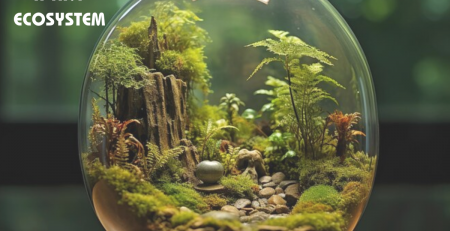Nutrient Deficiencies: Decoding the Language of Your Plant’s Leaves
Imagine this: you’ve been diligently caring for your houseplants, watering them regularly, and ensuring they get plenty of sunlight. Yet, despite your efforts, you notice their leaves starting to turn yellow or develop strange spots. What could be going wrong? The answer might lie in their diet – specifically, their nutrient intake. In this blog post, we’ll delve into the world of nutrient deficiencies in plants, deciphering the symptoms they exhibit and how to address them effectively.
Understanding Nutrient Deficiencies:
Plants, like humans, require a balanced diet to thrive. Essential nutrients such as nitrogen, phosphorus, potassium, calcium, magnesium, and various micronutrients play crucial roles in their growth and development. When plants lack these nutrients, they display specific symptoms that can help us diagnose and address the issue.
Common Nutrient Deficiencies and Their Symptoms:
- Nitrogen (N) Deficiency:
- Symptoms: Yellowing (chlorosis) of older leaves starting from the tips and spreading towards the base. Stunted growth and overall pale appearance.
- Nitrogen is essential for chlorophyll production, which gives leaves their green color. Without enough nitrogen, plants struggle to produce chlorophyll, leading to yellowing leaves.
-
Phosphorus (P) Deficiency:
- Symptoms: Dark green or purple leaves, especially on the underside. Stunted growth and delayed flowering.
- Phosphorus is crucial for energy transfer within plants, especially during periods of growth and flowering. A deficiency can hinder these processes, resulting in dark green or purplish leaves.
-
Potassium (K) Deficiency:
- Symptoms: Yellowing or browning of leaf margins, starting with older leaves. Leaf curling or crinkling, weak stems.
- Potassium regulates water uptake and transpiration in plants, as well as enzyme activation. Without enough potassium, plants struggle to regulate water balance, leading to leaf margin discoloration and other symptoms.
-
Calcium (Ca) Deficiency:
- Symptoms: Leaf tip burn (necrosis), distorted growth, blossom end rot in fruits.
- Calcium plays a vital role in cell wall formation and structure. A deficiency can result in weakened cell walls, leading to symptoms like leaf tip burn or blossom end rot in fruits.
-
Magnesium (Mg) Deficiency:
- Symptoms: Yellowing between leaf veins (interveinal chlorosis), starting with older leaves. Leaf margins may remain green.
- Magnesium is a component of chlorophyll molecules, essential for photosynthesis. A deficiency leads to chlorophyll degradation, causing interveinal chlorosis.
-
Micronutrient Deficiencies (e.g., Iron, Zinc, Manganese, Boron):
- Symptoms vary depending on the nutrient but may include chlorosis, stunted growth, leaf discoloration, or malformed leaves.
Addressing Nutrient Deficiencies:
Once you’ve identified the nutrient deficiency affecting your plants, you can take steps to address it:
- Fertilization: Use a balanced fertilizer containing the deficient nutrient(s) according to the plant’s needs and growth stage.
- Soil Amendments: Incorporate organic matter or specific soil amendments to improve nutrient availability in the soil.
- Foliar Sprays: Apply liquid nutrient solutions directly to the leaves for rapid absorption.
- pH Adjustment: Some nutrient deficiencies are related to soil pH. Adjusting soil pH can improve nutrient uptake.
Conclusion:
Nutrient deficiencies can significantly impact plant health and growth, manifesting in various symptoms that are visible to the discerning eye. By understanding these symptoms and addressing the underlying nutrient imbalances, you can ensure your plants receive the nourishment they need to thrive. Keep a close eye on your plants, listen to what their leaves are telling you, and nourish them accordingly – they’ll reward you with lush, vibrant foliage in return.
Remember, healthy plants start with a well-balanced diet!













Leave a Reply